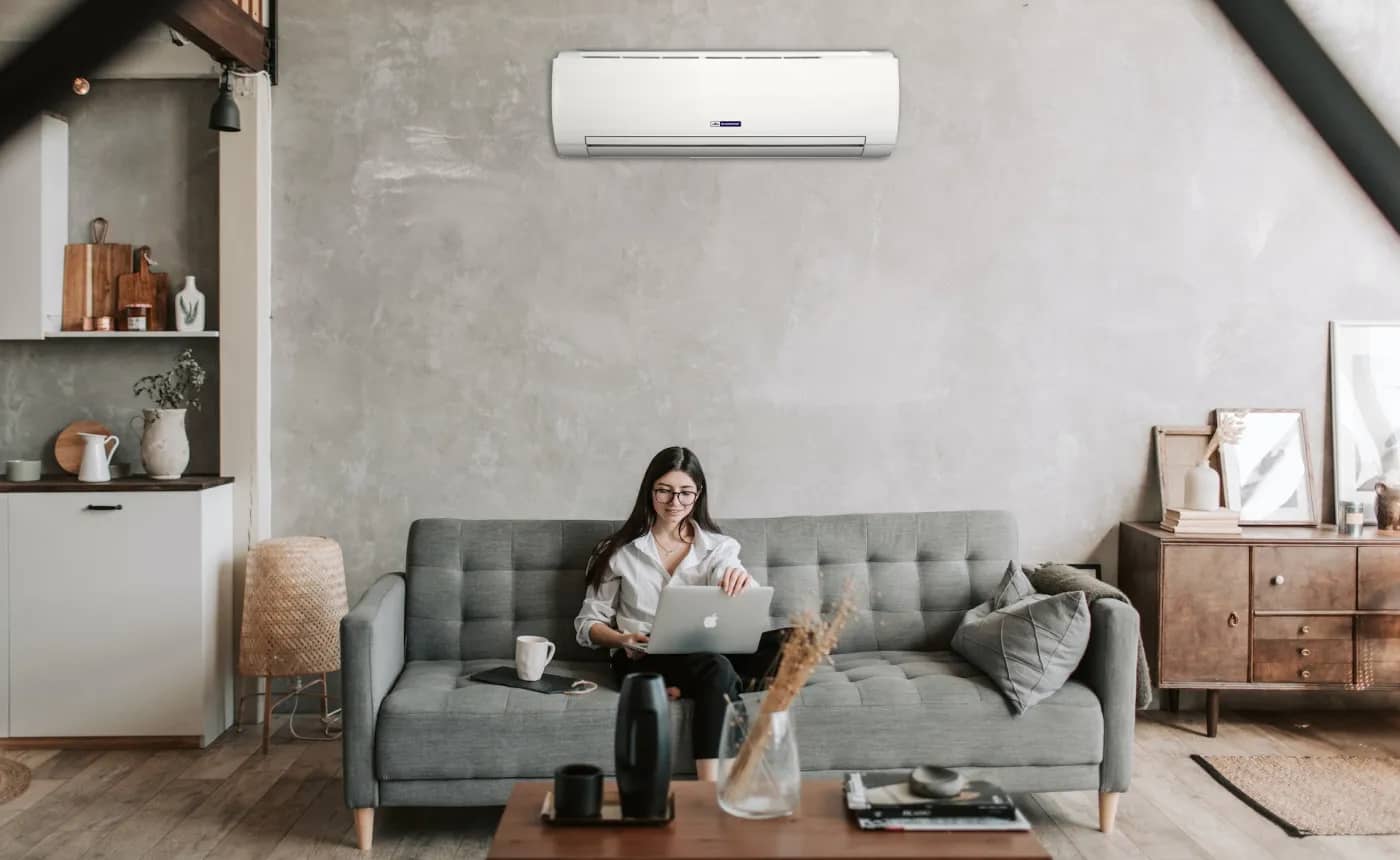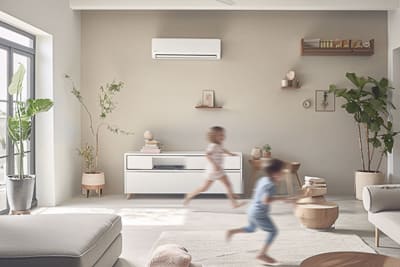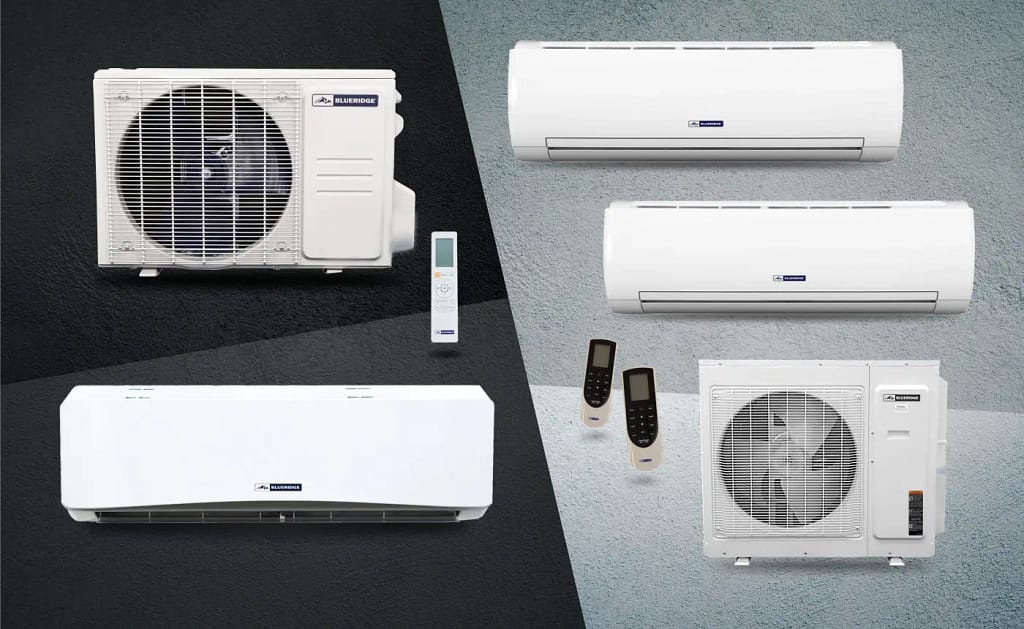
As the popularity of ductless mini-splits continues to grow, more and more people want to learn about these innovative cooling and heating systems. Understanding the two primary configurations–single-zone and multi-zone mini-splits–will help a business or homeowner choose the right system for their needs based on the size of their space, budget, and specific comfort requirements.
KEY TAKEAWAYS
- Ductless mini-splits have quickly evolved as an incredibly effective and efficient way to heat and cool various homes and workspaces.
- Providing consistent heating and cooling to a large, multiple-room structure is one of the unique features of multi-zone mini splits.
- Knowing the details of these innovative comfort solutions will help determine what type of mini-split will work best for you.
While ductless mini-split systems are highly efficient and eco-friendly, not every type of system or style of indoor unit will work for every space.
Let’s look at some of the key features of a ductless mini-split air conditioning system to ensure you make the best investment for your needs and space.
What are Ductless Mini-Split Systems?
A ductless mini-split system is a heating, ventilation, and air conditioning (HVAC) system that provides both cooling and heating for indoor spaces.
Unlike the traditional central forced air systems, mini-splits don’t need ductwork. Hence, installing distribution ductwork has become a thing of the past.
Ductless mini-split systems consist of two main components. The first is an outdoor unit, which houses the compressor and condenser. The second is one or more indoor units or air handlers.
The indoor units are typically wall-mounted or ceiling-mounted and distribute conditioned air into individual rooms or zones.
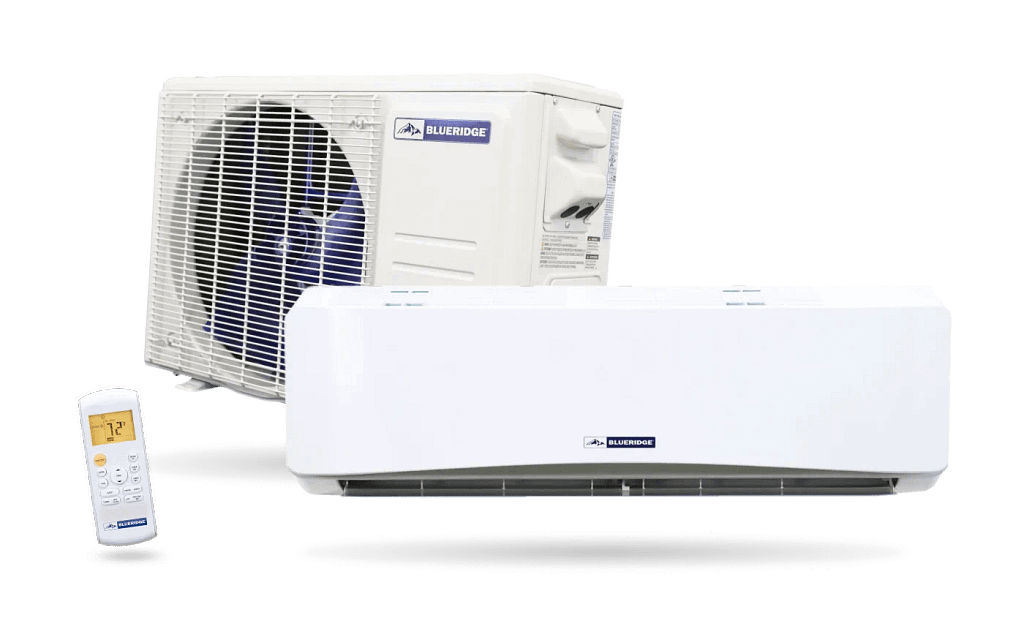
Ductless mini-split systems transfer heat between the outdoor and indoor units through copper lines carrying refrigerant.
They also use heat pump technology to provide efficient cooling in hot weather and effective heating in cold weather.

A mini-split ductless air conditioner is a versatile cooling and heating system suited for various applications, from residential homes to commercial spaces.
Mini-splits offer advantages such as energy efficiency, ease of installation, and the ability to create customized comfort zones within a building.
Additionally, ductless mini-splits are known for their quiet operation and compact design. No wonder they’re popular for retrofitting existing spaces and new construction projects.

Do I Need a Single-Zone or Multi-Zone Mini-Split to Heat and Cool My Space?
The choice largely depends on how many distinct areas (or “zones”) within your space need climate control.
The original single-zone mini-split provides the best coverage for one small to medium-sized area. The applications are endless, but think of a spare bedroom, sunroom, attic playroom, or converted garage workshop.
If you’ve got more area to cover under the same roof, then a multi-zone mini-split may be a better choice.
Let’s look at the differences between these two types of mini-split systems.
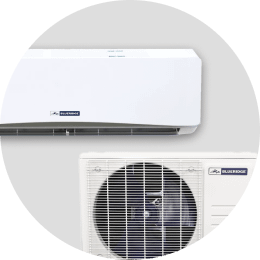
A single-zone mini-split system is exactly what it sounds like. These systems include a single outdoor condenser unit and one indoor air handler. The indoor unit is responsible for heating and cooling within one specific room or zone.
These mini-splits are ideal in single rooms or smaller spaces. They’re also great for supplementing existing heating and cooling systems in areas requiring additional climate control.

A multi-zone mini-split system is a great option for conditioning multiple rooms or zones within a home or office.
Unlike single-zone systems, multi-zone mini-splits consist of one outdoor condenser connected to multiple indoor air handlers, each serving a distinct area or room.
This configuration allows for personalized climate control in various parts of your space, offering heating and cooling as needed.
Can I use Multiple Single-Zone Mini-Splits to Cover my Space?
While single-zone mini-split systems are great for providing climate control to one small-to-medium-sized space, they may not adequately cover larger or more complex environments.
There are many reasons why people consider using two or more single-zone systems to solve their heating and cooling woes.
First, multi-zone mini-splits are not as widely known as the classic single-zone models. It’s natural to think multiple (single-zone) systems would be needed to cover a larger or multi-room space.
Second, home and business owners may be falsely optimistic that one single-zone unit will provide optimal coverage to their space. They may later realize the need for a second single-zone system to get the desired level of climate control.
Third, some may wonder about upfront and long-term costs or the ease of installation when considering more than one single-zone system versus a multi-zone mini-split.
It’s important to understand that several key factors influence the choice between multiple single-zone systems and one multi-zone mini-split.

Upfront Cost
The purchase price of single-zone and multi-zone systems will vary based on brand, size (BTU capacity), features, and air handler type.
All things being equal, a multi-zone mini-split usually costs more due to its complexity, which requires multiple indoor units to communicate with a single outdoor unit.

Installation Cost & Complexity
While installing multiple single-zone mini-splits is relatively straightforward, connecting multiple outdoor units can be time-consuming and more costly.
In contrast, a multi-zone system shares one outdoor unit with several indoor air handlers, reducing installation time and potential complications.

Energy Efficiency
All mini-splits are indeed champions of energy efficiency, though multi-zone systems have an edge over their single-zone counterparts.
Through advanced technology, multi-zone systems dynamically adapt their output according to the specific needs of each indoor zone. This intelligent energy use means more efficient performance and lower utility bills.

Space-Saving
Multi-zone mini-splits require only one outdoor unit, which takes up less space than several single-zone systems, each with an outdoor unit.
This is particularly advantageous if outdoor space is limited or if you prefer a neater exterior appearance.

Enhanced Aesthetics
With fewer outdoor units and associated piping, your home or office’s exterior retains a cleaner, more attractive look.
This can be especially important for businesses, homes, or neighborhoods with strict aesthetic requirements.

Zoned Control
Multi-zone mini splits offer individual temperature control for each zone. You can heat or cool different rooms or areas independently, optimizing comfort and energy use.

Environmental Impact
Using a single outdoor unit is more environmentally friendly than operating several. Multi-zone systems are designed with energy efficiency in mind, reducing greenhouse gas emissions associated with cooling and heating.

Maintenance
Maintaining one outdoor unit and a few indoor air handlers is less time-consuming and costly than caring for multiple systems. With a multi-zone setup, routine maintenance becomes more manageable.

Flexibility
Multi-zone mini splits allow you to add or remove indoor air handlers as your needs change. This flexibility makes them suitable for spaces with changing requirements, such as home renovations or office reconfigurations.
Sizing Specifics: Some Common Uses for Multi-Zone Mini-Splits
Let’s look at specific examples where a multi-zone mini-split makes a perfect comfort solution for a home or business.
Dual-Zone Mini-Split:
Scenario: A primary bedroom and adjoining nursery in a home.
How It Works: In this situation, a homeowner would be encouraged to install one indoor unit in the primary bedroom and another in the nursery; both will share a single outdoor unit.
This configuration provides individualized comfort for parents and children while minimizing energy consumption.
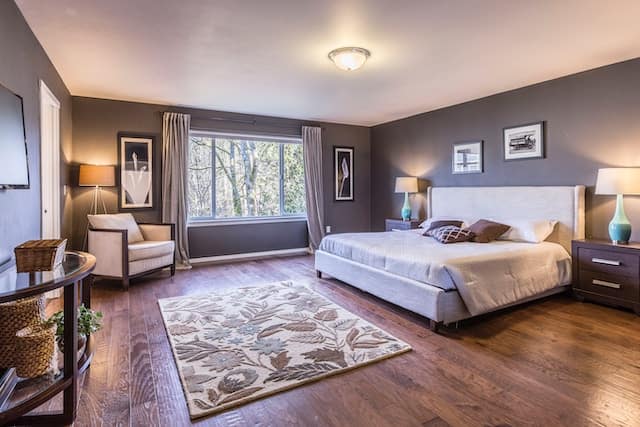
Three-Zone Mini-Split:
Scenario: A small office space with a reception area, private office, and conference room.
How it Works: In this situation, a small-business owner would be instructed to place one indoor unit in the reception area, one in the private office, and one in the conference room.
This setup allows separate temperature control for each zone, enhancing comfort and productivity.

Four-Zone Mini-Split:
Scenario: A medium-sized restaurant with a dining area, bar, kitchen, and waiting area.
How it Works: Restaurants of this size will take advantage of a four-zone mini-split by installing indoor units in the dining area, bar, kitchen, and waiting area.
This configuration ensures precise climate control in different sections of the restaurant, creating a pleasant dining experience.

Five-Zone Mini-Split:
Scenario: A home with a living room, kitchen, two bedrooms, and bathroom.
How it Works: Larger homes will benefit from a five-zone mini-split by placing indoor units in the living room, bedrooms, kitchen, and bathroom.
With one outdoor unit, a homeowner can tailor the temperature in each area to their liking, enhancing everyone’s comfort and the home’s overall efficiency.

These multi-zone mini-split configurations demonstrate the adaptability and versatility of these systems across various settings. They allow users to create distinct comfort zones, efficiently manage energy usage, and enjoy customized heating and cooling solutions tailored to their needs.
Can I Install a Multi-Zone Mini-Split on My Own?
Depending on your level of expertise and interest in do-it-yourself projects, you may need professional help with multi-zone mini-split installation.

While installing a single-zone mini-split system is usually feasible for seasoned DIYers, a multi-zone configuration may require professional assistance due to its increased complexity.
Here are some considerations to help you decide whether to tackle a multi-zone mini-split project yourself or seek professional assistance:
- Skill Level: If you’re highly skilled in HVAC, electrical work, and refrigerant handling, you may have the expertise to complete a DIY multi-zone installation. However, consulting a professional may be advised because the job is more complex than a single-zone setup.
- Complexity: Multi-zone systems connect multiple indoor units to one outdoor unit, requiring precise calculations and coordination. DIY enthusiasts may be able to perform these tasks, but professionals can ensure proper sizing, configuration, and refrigerant line connections.
- Safety: HVAC professionals are well-versed in safety protocols, reducing the risk of accidents during installation. DIY installations might pose safety hazards, especially if you’re unfamiliar with electrical and refrigerant work.
- Efficiency: A professional installer may optimize the system’s efficiency by strategically placing indoor units and ensuring correct refrigerant flow. This expertise can lead to better performance and energy savings.
- Warranty: Many manufacturers require professional installation to maintain warranty coverage. DIY installations may void warranties, potentially leading to costly repairs in case of issues.
- Time and Convenience: DIY projects typically take longer, and you might face challenges that delay completion. However, if you enjoy having the flexibility to work at your own pace, DIY may be a good choice.
Each person must decide whether taking on a multi-zone mini-split project is doable.
While plenty of guided videos and how-to instructions support the DIY weekend warrior, excellent HVAC professionals are available to help.

For All Types of Mini-Splits, Trust Alpine Home Air Products
When it comes to efficiently heating and cooling larger spaces, a multi-zone mini-split system consistently outshines the limitations of a single-zone setup.
Whether you have a spacious home with multiple rooms or an expansive office with distinct zones, a multi-zone configuration provides the flexibility, comfort, and cost-effectiveness you need.
If you think a multi-zone mini-split is the answer for your heating and cooling needs, contact Alpine Home Air’s trusted experts for help.
With our vast range of high-quality systems and expert guidance, we’re here to help you find the perfect solution for your unique heating and cooling requirements.
It’s time to say goodbye to the constraints of traditional central air HVAC systems. Embrace the versatility and efficiency of a ductless multi-zone mini-split system!
Your comfort and savings await at Alpine.
